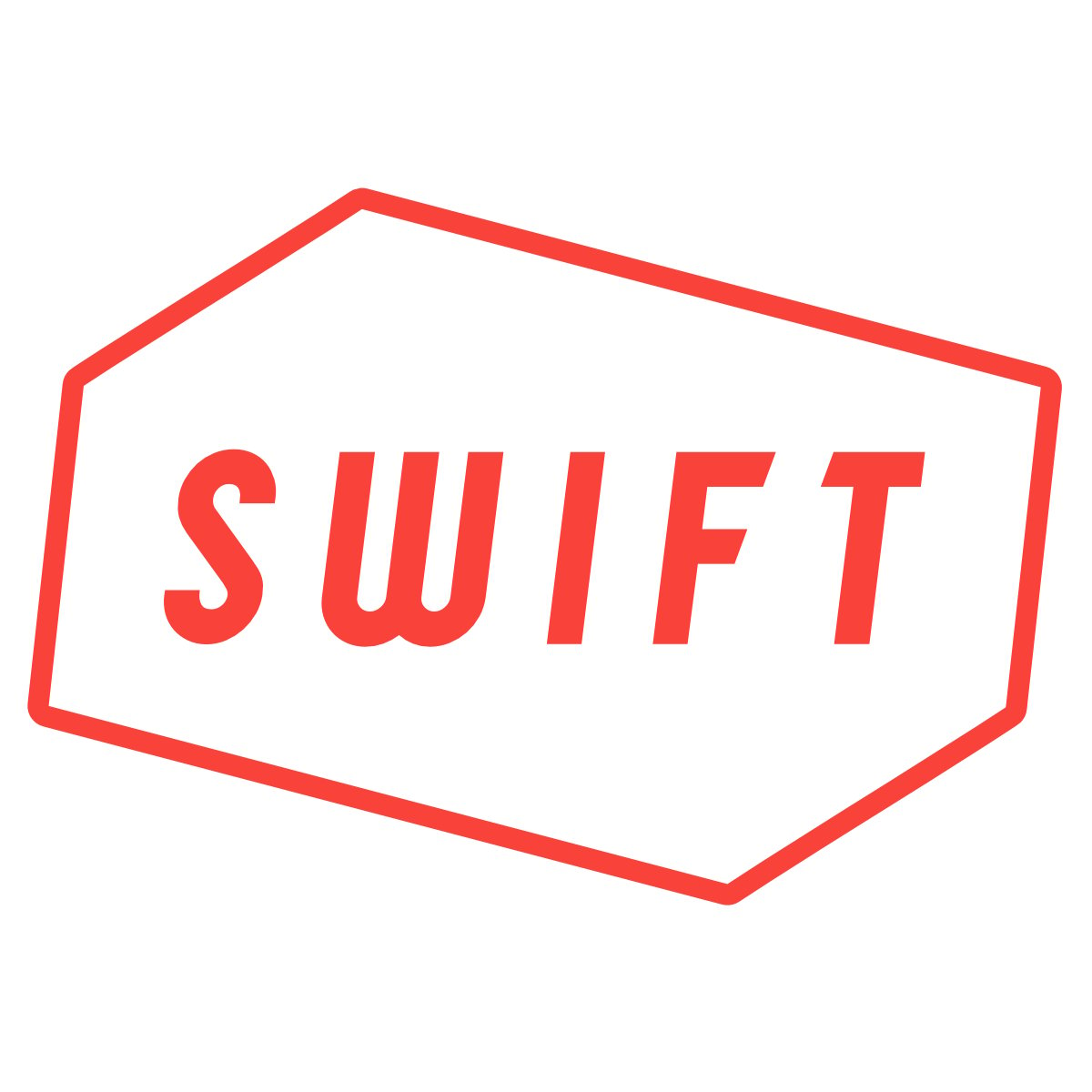CLASS OF 2024
SS
3B
Eddie
Rynders
Kent State
Wisconsin Lutheran (HS) • WI
 6' 1" • 198.4LBS
6' 1" • 198.4LBS
L/R • 19yr
Travel Team: GRB STiKS Black/GRB National
Wisconsin Lutheran (HS) • WI
L/R • 19yr
Travel Team: GRB STiKS Black/GRB National
Rankings
2024 National
Rankings available to Premium Subscriber
2024 State
Rankings available to Premium Subscriber
Commitment
Best Of Stats
25.1
Hand Speed (max)
3/14/21
77
Bat Speed (max)
2/04/24
11.1
Rot. Acc (max)
3/14/21
63
Hard Hit %
2/04/24
102.2
Exit Velocity (max)
2/04/24
91.4
Exit Velocity (avg)
2/04/24
391
Distance (max)
2/04/24
80
Sweet Spot %
3/14/21
6.73
60
2/04/24
-
30-yd
1.73
10-yd
3/18/23
19.5
Run speed (max)
3/18/23
90
INF Velo
2/04/24
-
OF Velo
-
C Velo
-
Pop Time
Fastball
87
Velocity (max)
3/26/24
83 - 86
Velo Range
3/26/24
1932
Spin Rate (avg)
3/14/21
Changeup
76 - 78
Velo Range
3/14/21
1405
Spin Rate (avg)
3/14/21
Curveball
73.7 - 75.3
Velo Range
3/14/21
2251
Spin Rate (avg)
3/14/21
Slider
74 - 76
Velo Range
3/26/24
-
Spin Rate (avg)
Positional Tools
2024
2023
2021
2020
60 Yard Dash
The athlete's fastest 60-yard dash time in the given event year. Measured in seconds (s)
6.73
Infield Velocity
The athlete's maximum throwing velocity from an infield position in the given event year. Measured in miles per hour (MPH).
90.0
Power / Speed Score
A simple calculation that divides the athlete’s Exit Velocity Max by the athlete’s 60 Yard Dash time for the given event year. For example, 98 MPH / 7.00s = 14.00.
15.2
60 Yard Dash
The athlete's fastest 60-yard dash time in the given event year. Measured in seconds (s)
6.99
Infield Velocity
The athlete's maximum throwing velocity from an infield position in the given event year. Measured in miles per hour (MPH).
88.0
Power / Speed Score
A simple calculation that divides the athlete’s Exit Velocity Max by the athlete’s 60 Yard Dash time for the given event year. For example, 98 MPH / 7.00s = 14.00.
13.9
60 Yard Dash
The athlete's fastest 60-yard dash time in the given event year. Measured in seconds (s)
7.36
Infield Velocity
The athlete's maximum throwing velocity from an infield position in the given event year. Measured in miles per hour (MPH).
75.0
Power / Speed Score
A simple calculation that divides the athlete’s Exit Velocity Max by the athlete’s 60 Yard Dash time for the given event year. For example, 98 MPH / 7.00s = 14.00.
11.7
60 Yard Dash
The athlete's fastest 60-yard dash time in the given event year. Measured in seconds (s)
8.09
Infield Velocity
The athlete's maximum throwing velocity from an infield position in the given event year. Measured in miles per hour (MPH).
71.0
Power / Speed Score
A simple calculation that divides the athlete’s Exit Velocity Max by the athlete’s 60 Yard Dash time for the given event year. For example, 98 MPH / 7.00s = 14.00.
9.1
Hitting

2024
2023
2021
Exit Velocity Max
The highest exit velocity of any batted ball in the given event year. Measured in miles per hour (MPH).
102.2
Exit Velocity Avg
Average exit velocity of all batted balls in the given event year. Measured in miles per hour (MPH).
91.4
Distance Max
The highest flight distance of any batted ball in the given event year. Measured in feet (ft).
391
Distance Avg
Average flight distance of all batted balls in the given event year. Measured in feet (ft).
312
Launch Angle Avg
Average launch angle of all batted balls in the given event year. Measured in degrees.
28.6
Hard Hit %
Percentage of batted balls with exit velocities over 95 MPH in the given event year.
Sweet Spot %
Percentage of batted balls in the given event year with a launch angle between 8° and 32°.
Line Drive %
Percentage of batted balls with launch angles between 10 and 25 degrees in the given event year.
Fly Ball %
Percentage of batted balls with launch angles between 25 and 50 degrees in the given event year.
Ground Ball %
Percentage of batted balls with launch angles below 10 degrees in the given event year.
Exit Velocity Max
The highest exit velocity of any batted ball in the given event year. Measured in miles per hour (MPH).
97.1
Exit Velocity Avg
Average exit velocity of all batted balls in the given event year. Measured in miles per hour (MPH).
87.9
Distance Max
The highest flight distance of any batted ball in the given event year. Measured in feet (ft).
339
Distance Avg
Average flight distance of all batted balls in the given event year. Measured in feet (ft).
248
Launch Angle Avg
Average launch angle of all batted balls in the given event year. Measured in degrees.
23.3
Hard Hit %
Percentage of batted balls with exit velocities over 95 MPH in the given event year.
Sweet Spot %
Percentage of batted balls in the given event year with a launch angle between 8° and 32°.
Line Drive %
Percentage of batted balls with launch angles between 10 and 25 degrees in the given event year.
Fly Ball %
Percentage of batted balls with launch angles between 25 and 50 degrees in the given event year.
Ground Ball %
Percentage of batted balls with launch angles below 10 degrees in the given event year.
Exit Velocity Max
The highest exit velocity of any batted ball in the given event year. Measured in miles per hour (MPH).
86.4
Exit Velocity Avg
Average exit velocity of all batted balls in the given event year. Measured in miles per hour (MPH).
73.7
Distance Max
The highest flight distance of any batted ball in the given event year. Measured in feet (ft).
281
Distance Avg
Average flight distance of all batted balls in the given event year. Measured in feet (ft).
221
Launch Angle Avg
Average launch angle of all batted balls in the given event year. Measured in degrees.
27.5
Hard Hit %
Percentage of batted balls with exit velocities over 95 MPH in the given event year.
Sweet Spot %
Percentage of batted balls in the given event year with a launch angle between 8° and 32°.
Line Drive %
Percentage of batted balls with launch angles between 10 and 25 degrees in the given event year.
Fly Ball %
Percentage of batted balls with launch angles between 25 and 50 degrees in the given event year.
Ground Ball %
Percentage of batted balls with launch angles below 10 degrees in the given event year.
Super 60 Pro Showcase
Feb 4, 2024
Trackman - Hitting
102.2
Exit Velocity (max)
91.4
Exit Velocity (avg)
312
Distance (avg)
391
Distance (max)
Hard Hit %
Barrel %
Sweet Spot %
Line Drive %
Fly Ball %
Ground Ball %
Milwaukee Preseason ID
Mar 18, 2023
Trackman - Hitting
97.1
Exit Velocity (max)
87.9
Exit Velocity (avg)
248
Distance (avg)
339
Distance (max)
Hard Hit %
Sweet Spot %
Line Drive %
Fly Ball %
Ground Ball %
Madison Preseason I.D.
Mar 14, 2021
Trackman - Hitting
86.4
Exit Velocity (max)
73.7
Exit Velocity (avg)
221
Distance (avg)
281
Distance (max)
Sweet Spot %
Line Drive %
Fly Ball %
Hitting

2024
2023
2021
Hand Speed Max
The highest Peak Hand Speed of any swing in the given event year.
24.2
Hand Speed Avg
The average Peak Hand Speed for all swings in the given event year.
22.3
Bat Speed Max
The highest Bat Speed of any swing in the given event year.
77.0
Bat Speed Avg
The average Bat Speed for all swings in the given event year.
75.0
Rotational Acceleration Max
The highest Rotational Acceleration of any swing in the given event year.
Rotational Acceleration Avg
The average Rotational Acceleration for all swings in the given event year.
On-Plane Efficiency Max
The highest On-Plane Efficiency of any swing in the given event year.
On-Plane Efficiency Avg
The average On-Plane Efficiency for all swings in the given event year.
Hand Speed Max
The highest Peak Hand Speed of any swing in the given event year.
23.7
Hand Speed Avg
The average Peak Hand Speed for all swings in the given event year.
22.2
Bat Speed Max
The highest Bat Speed of any swing in the given event year.
74.7
Bat Speed Avg
The average Bat Speed for all swings in the given event year.
72.1
Rotational Acceleration Max
The highest Rotational Acceleration of any swing in the given event year.
Rotational Acceleration Avg
The average Rotational Acceleration for all swings in the given event year.
On-Plane Efficiency Max
The highest On-Plane Efficiency of any swing in the given event year.
On-Plane Efficiency Avg
The average On-Plane Efficiency for all swings in the given event year.
Hand Speed Max
The highest Peak Hand Speed of any swing in the given event year.
25.1
Hand Speed Avg
The average Peak Hand Speed for all swings in the given event year.
23.9
Bat Speed Max
The highest Bat Speed of any swing in the given event year.
68.1
Bat Speed Avg
The average Bat Speed for all swings in the given event year.
65.1
Rotational Acceleration Max
The highest Rotational Acceleration of any swing in the given event year.
Rotational Acceleration Avg
The average Rotational Acceleration for all swings in the given event year.
On-Plane Efficiency Max
The highest On-Plane Efficiency of any swing in the given event year.
On-Plane Efficiency Avg
The average On-Plane Efficiency for all swings in the given event year.
Super 60 Pro Showcase
Feb 4, 2024
Blast - Hitting
24.2
Hand Speed (max)
22.3
Hand Speed (avg)
77.0
Bat Speed (max)
75.0
Bat Speed (avg)
Rot. Acc (max)
Rot. Acc (avg)
On Plane Eff (avg)
MaxOnPlaneEfficiency
Milwaukee Preseason ID
Mar 18, 2023
Blast - Hitting
23.7
Hand Speed (max)
22.2
Hand Speed (avg)
74.7
Bat Speed (max)
72.1
Bat Speed (avg)
Rot. Acc (max)
Rot. Acc (avg)
On Plane Eff (avg)
MaxOnPlaneEfficiency
Madison Preseason I.D.
Mar 14, 2021
Blast - Hitting
25.1
Hand Speed (max)
23.9
Hand Speed (avg)
68.1
Bat Speed (max)
65.1
Bat Speed (avg)
Rot. Acc (max)
Rot. Acc (avg)
On Plane Eff (avg)
MaxOnPlaneEfficiency
Pitching

2021
Fastball
Velocity Max
The maximum observed fastball velocity in the given event year. Measured in miles per hour (MPH).
81.8
Fastball
Velocity Avg
The average velocity for all pitches of this type in the given event year. Measured in miles per hour (MPH).
81.2
Fastball
Spin Rate Avg
The average rate of spin for all pitches of this type in the given event year. Measured in rotations per minute (RPM).
1932
Fastball
Spin Score Avg
The average Bauer Units value of all fastballs in the given event year. Bauer Units are calculated for each pitch by dividing Spin Rate by Velocity.
23.8
Fastball
Total Movement Avg
The average total non-gravity movement for all pitches of this type in the given event year. Measured in inches (in).
Curveball
Velocity Avg
The average velocity for all pitches of this type in the given event year. Measured in miles per hour (MPH).
74.5
Curveball
Spin Rate Avg
The average rate of spin for all pitches of this type in the given event year. Measured in rotations per minute (RPM).
2251
Curveball
Total Movement Avg
The average total non-gravity movement for all pitches of this type in the given event year. Measured in inches (in).
Changeup
Velocity Avg
The average velocity for all pitches of this type in the given event year. Measured in miles per hour (MPH).
76.9
Changeup
Spin Rate Avg
The average rate of spin for all pitches of this type in the given event year. Measured in rotations per minute (RPM).
1405
Changeup
Total Movement Avg
The average total non-gravity movement for all pitches of this type in the given event year. Measured in inches (in).
Madison Preseason I.D.
Mar 14, 2021
Trackman - Fastball
81.8
Velocity (max)
80.6 - 81.8
Velo Range
79.2
Eff Velocity (avg)
1,954
Spin Rate (max)
1,932
Spin Rate (avg)
IVB (max)
IVB (avg)
HM (max)
HM (avg)
Extension (avg)
Release Ht (avg)
Spin Score (max)
Zone %
Trackman - Curveball
75.3
Velocity (max)
73.7 - 75.3
Velo Range
72.1
Eff Velocity (avg)
2,301
Spin Rate (max)
2,251
Spin Rate (avg)
IVB (max)
IVB (avg)
HM (max)
HM (avg)
Extension (avg)
Release Ht (avg)
Spin Score (max)
Zone %
Trackman - ChangeUp
78.3
Velocity (max)
76.1 - 77.8
Velo Range
75.7
Eff Velocity (avg)
1,461
Spin Rate (max)
1,405
Spin Rate (avg)
IVB (max)
IVB (avg)
HM (max)
HM (avg)
Extension (avg)
Release Ht (avg)
Spin Score (max)
Zone %
Pitch Scores
2021
Fastball
Hop+
A fastball with hop has a flat approach angle and visually jumps through the zone. When thrown up in the zone, it is more likely to generate a higher swing and miss average. Hop+ of 100 is MLB average.
Fastball
Sink+
A fastball with sink has low backspin and drops through the strike zone. When thrown down in the zone, it is more likely to generate a higher ground ball percentage and lower launch angle. Sink+ of 100 is MLB average.
Fastball
Rise+
A fastball with rise has a high percentage of backspin. When thrown up in the zone, it is more likely to generate a higher fly ball percentage. Rise+ of 100 is MLB average
Curveball
Hammer+
A hammer breaking ball drops vertically with velocity through the zone, or 12-to-6 movement. Hammer+ of 100 is MLB average.
Curveball
Sweep+
A sweeping breaking ball moves horizontally with velocity through the zone. Sweep+ of 100 is MLB average.
Pitching Velos
2024
2021
2020
Fastball
Velocity Max
The maximum observed fastball velocity in the given event year. Measured in miles per hour (MPH).
87.0
Fastball
Velocity Avg
The average velocity for all pitches of this type in the given event year. Measured in miles per hour (MPH)
84.5
Slider
Velocity Avg
The average velocity for all pitches of this type in the given event year. Measured in miles per hour (MPH)
75.0
Fastball
Velocity Max
The maximum observed fastball velocity in the given event year. Measured in miles per hour (MPH).
82.0
Fastball
Velocity Avg
The average velocity for all pitches of this type in the given event year. Measured in miles per hour (MPH)
81.5
Curveball
Velocity Avg
The average velocity for all pitches of this type in the given event year. Measured in miles per hour (MPH)
74.5
Changeup
Velocity Avg
The average velocity for all pitches of this type in the given event year. Measured in miles per hour (MPH)
77.0
Fastball
Velocity Max
The maximum observed fastball velocity in the given event year. Measured in miles per hour (MPH).
72.0
Fastball
Velocity Avg
The average velocity for all pitches of this type in the given event year. Measured in miles per hour (MPH)
70.0
Curveball
Velocity Avg
The average velocity for all pitches of this type in the given event year. Measured in miles per hour (MPH)
62.5
Changeup
Velocity Avg
The average velocity for all pitches of this type in the given event year. Measured in miles per hour (MPH)
66.5
Game Performance

2024
2023
Vertical Jump
A measure of any athlete's body strength and reach calculated from the flight time divided by the contact time.
10 Yard Dash
The athlete's fastest 0-10-yard split time in the given event year. Measured in seconds.
1.73
60 Yard Dash
The athlete's fastest 0-60-yard time in the given event year. Measured in seconds.
6.99
Top Speed (MPH)
The athlete's fastest split time converted to miles per hour.
Visual Edge

2024
2023
Edge Score
The highest Edge Score within the given year. Edge Score is a comprehensive score that takes the core-six visual skills into account, providing an assessment of an athlete’s overall visual ability.
78.63
Edge Score
The highest Edge Score within the given year. Edge Score is a comprehensive score that takes the core-six visual skills into account, providing an assessment of an athlete’s overall visual ability.
73.43
Pitch Ai

Notes
News
- 2024 Prep Baseball Wisconsin First Team All-State - Jun 24, 2024
- National Player of the Week: 5/6 to 5/12 - May 15, 2024
- Prep Baseball Wisconsin Player of the Week: Eddie Rynders - May 14, 2024
- Preseason Power 25 Countdown: No. 20 Wisconsin Lutheran - Mar 13, 2024
- Illinois & Wisconsin: Super 60 Recap - Feb 15, 2024
- Super 60: Shooter's Impact 11 - Feb 6, 2024
- Super 60 Preview: Illinois & Wisconsin - Feb 1, 2024
- Wisconsin Class of 2024 Rankings: Update - Nov 15, 2023
- Wisconsin Class of 2024 Rankings: Update - Aug 23, 2023
- Midwest Premier Super 17 (Member) Scout Blog: Day 4 - Jun 26, 2023
- Wisconsin Class of 2024 Rankings: Update - May 10, 2023
- Milwaukee Preseason ID: Quick Hits - Mar 28, 2023
- Milwaukee Preseason ID: Preview - Mar 16, 2023
- West Milwaukee Preseason ID: Preview - Feb 16, 2023
- Wisconsin Class of 2024 Rankings: Update - Aug 24, 2022
- Midwest Premier Super 17 (Member): Preview Story - Jun 22, 2022
- Wisconsin Class of 2024 Rankings: First Look - Oct 11, 2021
- Madison Preseason I.D.: Quick Hits - Mar 17, 2021
- The Rock Summer Classic 13/14U: Quick Hits Day 2 - Jul 31, 2020
- Madison Future Prospects Showcase: All Player Analysis - Jun 22, 2020
- PBR at The Rock 13U & 14U: Scout Blog - Jun 2, 2020
Comments
Draft Reports
Contact
Premium Content Area
To unlock contact information, you need to purchase a ScoutPLUS subscription.
Purchase Subscription OR
Login
Physical
2024
Grip Strgth (LH)
Grip strength is a measure of a players bat control and ability to transfer power and speed during impact, measured in pounds of force generated; collected with elbow bent at 90 degrees.
Grip Strgth (RH)
Grip strength is a measure of a players bat control and ability to transfer power and speed during impact, measured in pounds of force generated; collected with elbow bent at 90 degrees.







 Sign in to view rankings
Sign in to view rankings 
Kent State commit. Rynders emerged as one of the most highly regarded infielders in Wisconsin entering the 2024 season, and lived up to the hype as he prepares for the MLB Draft in the near future. The slick-fielding shortstop was a problem on the offensive end for Wisconsin Lutheran, batting .430 with 13 extra base hits and 36 runs scored. Rynders capitalized on strikes when he saw them, but also provided a disciplined eye at the plate. The senior finished with 20 walks and only nine strikeouts during the regular season—finishing the year with a 1.318 OPS. He led the Vikings to a conference championship amongst quality programs in the greater Milwaukee area, along with a Regional Title in the Division 1 field. Even when he didn’t produce extra base hits, the No. 2 player in the state found himself in scoring position often. Rynders swiped 25 bags in 2024—summarizing his dominance on the offensive end. In the field, Rynders finished with a 0.96 fielding percentage at the shortstop position—continuing to raise his stock on the infield as a defender. The senior has a bright future ahead of him, as our staff will be intrigued to see where he takes the field next after concluding his prep career on a high note.
Rynders delivered some of the best swings of the event providing a glimpse at a potential hit/power combination in the future. Delivering heavy barrels with upwards of 102.2 mph exit velocities and 391 ft. max distance, the left-handed hitter out of Wisconsin was balanced while portraying some controlled violence to a swing that saw him turn the barrel in a tight window with a propensity for lifting. The bat is clearly the carrying tool for the 6.73-runner whose ceiling as an infield defender would be more average, but he moved well enough to warrant a look on the dirt with a versatile profile in the outfield.
INF Eddie Rynders (Wisconsin Lutheran, 2024; Kent State commit) looked the part as one of the top players in Wisconsin’s 2024 class this weekend, as the physical 6-foot-2, 190-pound athlete ranks at No. 10 currently. His bat speed and confidence at the plate separates him on the diamond. Rynders showcased quality timing and patience, while also finding his share of barrels over the weekend. Ever since the Milwaukee Preseason ID, Rynders has been a standout in the state, and continued to write that narrative over the weekend. The Kent State commit finished with five hits in three games of action for his team.
Rynders continued to show why he is one of the state’s top prospects, regardless of class. One of the biggest takeaways from Rynders’ day was the mass he has added on to his athletic frame and is now listed at a premium 6-foot-2, 190-pounds. Rynders started his day by running a sub-7 60 at 6.99 and then would take one of the top rounds of infield defense, showcasing fluid, athletic and advanced actions, and fired his hardest bullet to first at 88 mph. While the rest of his day was impressive, Rynders really stole the show during his round of BP. Rynders, a left-handed hitter, sets up with rhythm before delivering a loose swing to the ball and he registered a max exit velocity of 97.1 mph and averaged 87.9 mph. His hit tool is also something we have seen collect a multitude of barrels in live gameplay, too. Currently ranked No. 10 in Wisconsin’s junior class, Rynders continued to impress our staff and we are confident that this won’t be the last time.
SS Eddie Rynders (Wisconsin Lutheran, 2024; Kent State commit) continued to show why he is one of the state’s top prospects, regardless of class. One of the biggest takeaways from Rynders’ day was the mass he has added on to his athletic frame and is now listed at a premium 6-foot-2, 190-pounds. Rynders started his day by running a sub-7 60 at 6.99 and then would take one of the top rounds of infield defense, showcasing fluid, athletic and advanced actions, and fired his hardest bullet to first at 88 mph. While the rest of his day was impressive, Rynders really stole the show during his round of BP. Rynders, a left-handed hitter, sets up with rhythm before delivering a loose swing to the ball and he registered a max exit velocity of 97.1 mph and averaged 87.9 mph. His hit tool is also something we have seen collect a multitude of barrels in live gameplay, too. Currently ranked No. 10 in Wisconsin’s junior class, Rynders continued to impress our staff and we are confident that this won’t be the last time.
Positional Profile: SS/2B
Body: 6-2, 190-pounds. Long levers, projectable, more fill coming.
Hit: LHH. Wider base set up, slightly open. Loose swing with barrel feel, drives balls to all fields.
Power: 97 max exit velocity, averaged 87.9 mph. 339’ max distance.
Arm: RH. INF - 88 mph. Present arm strength, carry and accuracy through the target.
Defense: Two-hand gather, fluid actions, fields ball to body, quick, clean transfer, athletic actions.
Run: 6.99 runner in the 60.
He exhibits some of the class’ biggest offensive potential, as a lean and wiry left-handed hitter with a loose swing that’s fluid in and through the zone. As he tacks on muscle to a 6-foot-1, 165-pound frame that can support it, he can mold his bat into one of the Midwest’s best – and his athleticism should keep him playing an above-average defense on the left side of the diamond.
Rynders is one to keep an eye on in this class. He’s got a loose left-handed swing and he enters the batter’s box with a confident look about him. Rynders has some projection to him, listed at a lanky 6-foot, 155 pounds, with a barrel control swing.
5-foot-8, 135 pounds; lanky frame with long levers. Left-handed hitter who tallied five hits over the weekend; athletic/balanced setup, short path that’s long through the zone, above-average bat speed, barrel feel, spray contact abilities. Solid up-the-middle actions on defense for age; short arm action with some carry.